
The Salt Lake Masonic Temple is the Masonic headquarters for Utah, and is Salt Lake City's best example of Egyptian Revival architecture. It was completed in 1927, and is located in the South Temple Historic District of Salt Lake City, Utah, United States.

The Historic Triune Masonic Temple is a meetinghouse of Freemasonry in Saint Paul, Minnesota, United States, built in 1910 in the Neo-Classical Revival style, designed by Henry C. Struchen (1871–1947). The structure was built for Triune Lodge No. 190, AF & AM. It is one of the earliest and best preserved buildings erected exclusively for the use of a single Masonic Lodge. Henry Struchen, although not an architect, was a contractor and designer. He was a member of Triune Lodge and a prominent builder in the city.
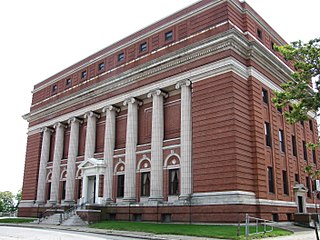
The Worcester Masonic Temple is a historic Masonic temple Located at 1 Ionic Avenue in downtown Worcester, Massachusetts. Construction on the temple began on September 12, 1913, with the laying of the cornerstone. The building was finished and dedicated on September 3, 1914, by the then Grand Master, Most Worshipful Melvin M. Johnson.

The Masonic Temple of El Dorado, Arkansas is located at 106-108 North Washington Street, on the west side of the courthouse square. The four-story masonry building was built in 1923–24 to a design by Little Rock architect Charles S. Watts. It is one of a small number of buildings in Arkansas with Art Deco styling influenced by the Egyptian Revival. This particular styling was likely influence by the 1922 discovery of the Tomb of Tutankhamun.

The Highlands Masonic Lodge, also known as the Pythian Building, is a historic building located in Denver, Colorado. Built in 1905 and constructed in the Classical Revival style, it was listed on the National Register of Historic Places in 1995.
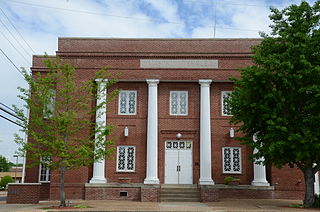
The Russellville Masonic Temple, also known as Russellville City Hall, is a clubhouse and municipal building at 205 South Commerce Street in Russellville, Arkansas. Built in 1926, it is a Classical Revival building. It was listed on the National Register of Historic Places in 2005.

The Fort Smith Masonic Temple is a historic building at 200 North 11th Street in Fort Smith, Arkansas. It is a large stone-walled structure, with styling that is an Art Deco-influenced version of Egyptian Revival architecture. Its main (northwest-facing) facade has a projecting central section, from which a series of bays are progressively stepped back, unified by a band of decorative carving at the top, just below the flat roof. The central portion has slightly-projecting pilaster-like sections flanking three recessed bays, which are divided by two fluted pilasters and topped by decorative carved stonework and a panel identifying the building. The entrance is set in the center bay, recessed under a projecting square frame. The building was designed by Little Rock architect George R. Mann and completed in 1929. It is one of the few buildings in Arkansas to exhibit Egyptian Revival styling, which is particularly pronounced in the building's interior decoration.

The South Temple Historic District is a 119-acre (48 ha) historic district that was the first to be listed in the Salt Lake City Register in 1976, and was listed on the National Register of Historic Places in 1982.
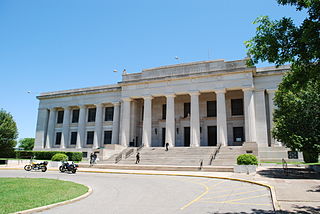
The Scottish Rite Temple in Guthrie, Oklahoma, is a Masonic temple that serves as the home of the Scottish Rite in the Guthrie Valley, Oklahoma Orient, Ancient and Accepted Scottish Rite of Freemasonry, Southern Jurisdiction, U.S.A. This is actually a complex consisting of two buildings on a 10 acres (40,000 m2) plot of ground on Oklahoma Avenue in downtown Guthrie that was originally named Capitol Park.

The Masonic Temple of Des Moines is a historic Beaux Arts style building located in Des Moines, Iowa. Constructed in 1913, it was listed on the National Register of Historic Places (NRHP) in 1997.

The Monroe County Museum is a historic building located in Sparta, Wisconsin. It was constructed in 1923 as a meeting hall for a local Masonic Lodge, and was listed on the National Register of Historic Places in 1987 under the historic name "Sparta Masonic Temple".

The Masonic Temple Building in Viroqua, Wisconsin was built in the Classical Revival style. It was designed by architects Albert E. Parkinson and Bernard Dockendorff and was listed on the National Register of Historic Places in 2000.
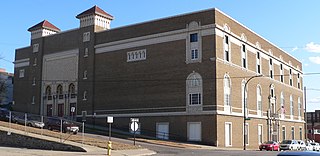
The Sioux City Masonic Temple in Sioux City, Iowa was built during 1921–1922. It was listed on the National Register of Historic Places in 2004.
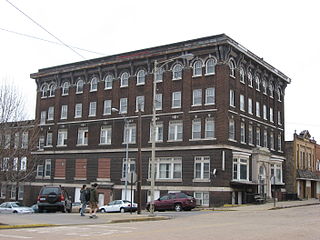
The YMCA in East Liverpool, Ohio was built in 1913 in Classical Revival style. It was listed on the National Register of Historic Places in 1985.

The U.S. Post Office and Courthouse in Devils Lake, North Dakota, was built in 1908. It was designed by James Knox Taylor and includes Classical Revival architecture. Also known as Devils Lake Post Office and as the Federal Building, it served historically as a courthouse and as a post office. The building was listed on the National Register of Historic Places in 1978.

The Cedar Rapids Scottish Rite Temple, also known as the Scottish Rite Masonic Center, is a historic building located at 616 A Avenue, Cedar Rapids, Iowa. It is listed on the National Register of Historic Places (NRHP) as Consistory Building No. 2

Joseph A. Shannon (1859-1934), known in at least one source as John A. Shannon, was an architect in Devils Lake, North Dakota.

The Albert Pike Memorial Temple is a historic Masonic lodge at 700-724 Scott Street in Little Rock, Arkansas. It is an imposing three-story Classical Revival structure, finished in limestone, and featuring a long colonnade of 40-foot (12 m) Ionic columns on its front facade, which occupies half of a city block. Entry is gained to the building via three sets of massive bronze doors flanked by stone eagles. Completed in 1924, it was designed by local Masons George R. Mann and Eugene Stern. It is named in honor of Albert Pike.
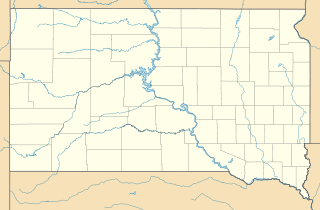
The Moody County Courthouse in Flandreau, South Dakota, United States, was built in 1915. It was listed on the National Register of Historic Places in 1993.






















